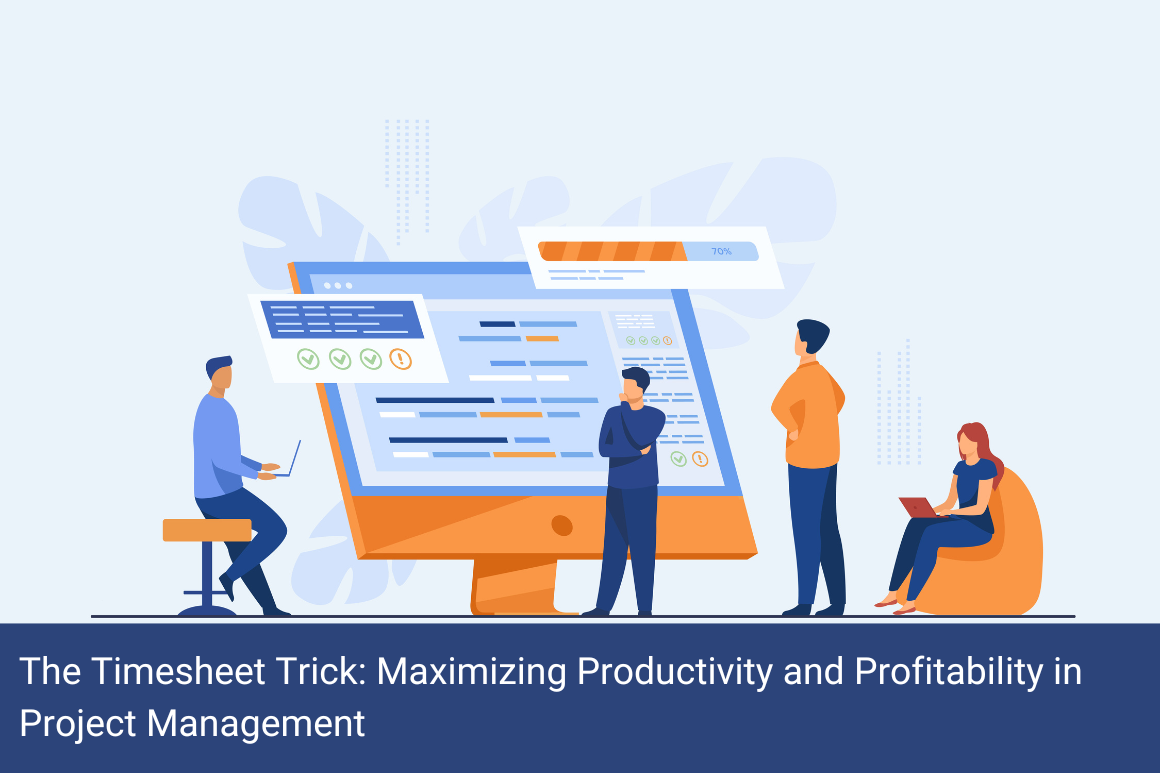
In project management, time is a critical resource that can make or break the success of a project. In order to maximize productivity and profitability, project managers need to have a clear understanding of how time is being spent, and they need to be able to identify areas for improvement and optimization. One tool that can help project managers to achieve this is the timesheet. In this blog, we will explore the timesheet trick and how it can be used to maximize productivity and profitability in project management.
What is a timesheet?
A timesheet is a tool used to track the amount of time spent on various activities throughout a project. It typically includes information such as the date, the time spent on each activity, and the person responsible for completing the task. Timesheets can be used to track time spent on billable activities, such as client work or project management tasks, as well as non-billable activities, such as internal meetings or training sessions.
Why are timesheets important?
Timesheets are an important tool for project management for a number of reasons. Firstly, timesheets help project managers to track how time is being spent, which can help to identify areas for improvement and optimization. By tracking time spent on various activities, project managers can identify bottlenecks, inefficiencies, and areas where time is being wasted. This information can be used to improve processes, workflows, and resource allocation, which can ultimately improve project outcomes.
Secondly, timesheets help project managers to track employee performance and productivity. By tracking how much time employees are spending on various tasks, project managers can identify areas where employees may be struggling or where additional training or support may be necessary. This information can be used to provide feedback to employees, set performance goals, and identify areas for professional development.
Thirdly, timesheets can help project managers to improve project billing and invoicing. By tracking time spent on billable activities, project managers can ensure that they are accurately capturing billable hours and that they are invoicing customers correctly. This information can be used to improve cash flow and to ensure that projects are generating the expected revenue.
Maximizing productivity with timesheets
Now that we understand why timesheets are important, let’s explore how they can be used to maximize productivity and profitability in project management. Here are some tips for using timesheets effectively:
Use timesheets to track time spent on both billable and non-billable activities. This will help project managers to get a complete picture of how time is being spent across the project.
Encourage employees to use timesheets consistently and regularly. This will help to ensure that the data is accurate and up-to-date.
Integrate timesheets into the overall project management process. Make sure that timesheets are being used in conjunction with other project management tools, such as project plans and task management tools.
Analyze timesheet data regularly to identify areas for improvement and optimization. Use this information to make data-driven decisions about resource allocation, process improvements, and training opportunities.
Provide feedback to employees based on their timesheet data. Use this information to identify areas where employees may be struggling or where additional training or support may be necessary.
Maximizing profitability with timesheets
In addition to maximizing productivity, timesheets can also be used to maximize profitability in project management. Here are some tips for using timesheets to improve project profitability:
- Use timesheets to track billable hours accurately. This will help project managers to ensure that they are billing customers correctly and that they are generating the expected revenue.
- Identify areas where time is being wasted or where processes could be improved. Use this information to streamline workflows, reduce bottlenecks, and optimize resource allocation.
- Use timesheets to monitor project progress and identify areas where additional resources may be necessary
- Use timesheet data to estimate future project costs and timelines. By analyzing how much time was spent on various tasks in previous projects, project managers can better estimate how much time and resources will be necessary for future projects.
- Use timesheets to track project expenses, such as travel costs, material costs, and equipment rentals. This will help project managers to accurately track project expenses and to ensure that projects are staying within budget.
- Use timesheet data to identify high-performing employees and reward them accordingly. By tracking how much time employees are spending on various tasks, project managers can identify employees who are performing exceptionally well and reward them with bonuses, promotions, or other incentives.
- Use timesheets to improve project planning and forecasting. By understanding how time is being spent across various projects, project managers can improve their project planning and forecasting capabilities, ensuring that projects are completed on time and on budget.
Conclusion
In conclusion, the timesheet trick is a powerful tool that can be used to maximize productivity and profitability in project management. By using timesheets to track time spent on various activities, project managers can identify areas for improvement and optimization, monitor employee performance and productivity, improve project billing and invoicing, and make data-driven decisions about resource allocation, process improvements, and training opportunities. By following the tips outlined in this blog, project managers can effectively leverage timesheets to improve project outcomes, generate greater revenue, and achieve greater success in their projects.


